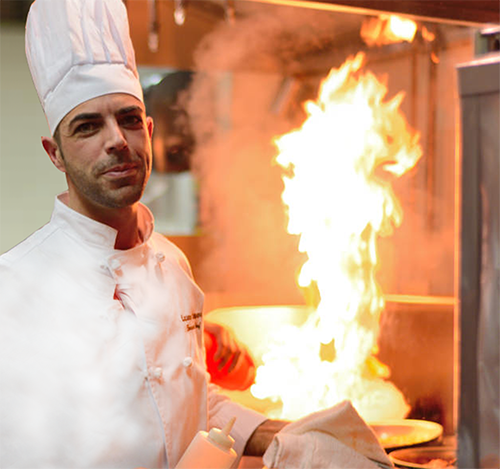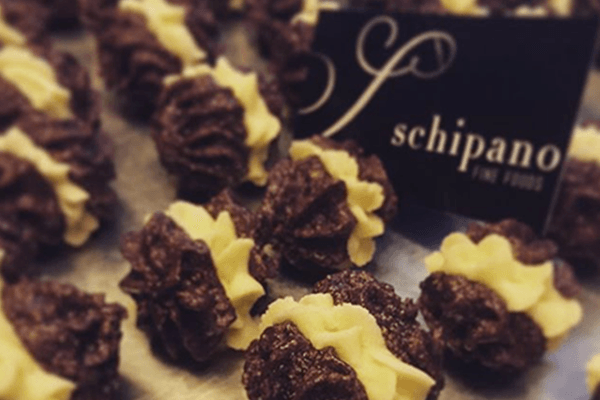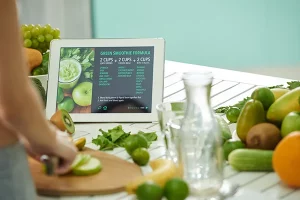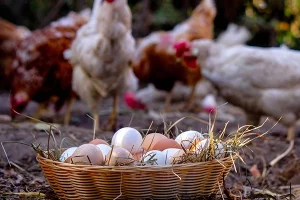Born in Canada, but raised in Italy, Luciano Schipano has always been food’s number one fan. Instead of spending his childhood biking around his neighbourhood and playing with his friends, he chose to master the art of cooking. From his childhood until now, he has been learning about all the flavours and nutrients food has to offer.
“I was always following my grandma’s cooking,” says Luciano. “I became fascinated with how you can create something so delicious with a few ingredients and some form of heat. When I was seven, my mom left me home alone, which I thought was the perfect time to make my own homemade sauce. Instead of being proud of me, she ended up punishing me because of how dangerous it was to be seven and cooking alone on a stove. But it made me realize that cooking is what I want to do.”
The experience helped Luciano decide to learn the trade. In Italy, he got his first degree in culinary management, and for five years studied food and nutrition. “I learned what food brings you. Food doesn’t only contain energy, it contains sugar, carbohydrates, protein, and vitamins. I decided to get my bachelor in fine foods, but in Italy the process is different,” explain Luciano.
Luciano ended up getting his bachelor and masters in tourism and demographics, but found that he wasn’t truly happy. So he gave up his career for his love of food, and opened up his own restaurant to continue cooking.
After learning about all the good and bad certain foods contain and relocating to Toronto, Luciano became an educational chef. “I wanted to share my knowledge. My grandma is 87 and has never needed to go to the hospital. She eats quality, seasonal foods, and gets all the nutrients she needs from where everyone should, her meals,” says Luciano.
“Nowadays, many people have insensitivities, like gluten, and chefs don’t believe that it’s possible to have these insensitivities, when it is,” explains Luciano. “It makes it hard for people to give their bodies what they need. For the past three years I’ve been focusing on gluten free recipes, which lead me to MenuSano and realized that it’s really doing something great.”
Luciano strongly believes that if a food’s nutritional analysis isn’t disclosed, then he probably doesn’t want to know what it contains. “As a chef, I feel responsible for my food. Everytime I cook a plate of pasta, I not only feel responsible for the taste, but for my guest’s health. I use quality products that have great taste, so I don’t need to choose between flavour and calories,” says Luciano. “This is what I teach children in my classes.”
Not having to choose between flavour and calories sounds great. But people tend to get worried about having to choose unhealthy, low-quality meals in order to be able to afford them, thinking it’s impossible to feed their family with whole foods on a budget.
“I always had the idea to do what Jamie Oliver was doing, but never heard of it when I was in Italy. When I moved to Canada in 2011, I introduced myself to Jamie Oliver. I found out about what he was doing and wanted to be a part of it. We ended up talking a little bit, and now I’m the ambassador for York Region,” says Luciano.
It’s been three years now that Luciano has been doing the cooking club. “I get to teach children the difference of nutrients in an avocado versus a tomato, the difference between a homemade pizza that costs $3.00 and doesn’t contain any artificial products, and a slice of pizza from a big chain. Parents are happy that their kids are learning how to eat right, and I’m happy because I can share everything I’ve spent my life learning,” says Luciano.
MenuSano helps Luciano show the difference of calories, fats, proteins, nutrients, and all sorts of facts of every recipe to his students, their parents, and all of his clients when creating new meals. “I’m very fascinated with the possibilities and opportunities that MenuSano provides. If I’m making something cholesterol-free, I can show the nutritional analysis with MenuSano. If I want to balance calories, I can swap out regular milk with coconut milk, and then add oatmeal. It’s great to be able to see what I’m creating and its benefits to the body,” says Luciano.
“I believe in cooking from scratch with fresh ingredients, all while getting enough nutrients. Food these days is not all good, and not all companies disclose their nutritional information for a reason. My mission as a chef is to leave a legacy. Something to read, and learn from. Not just today, but for tomorrow. I want to pass on my message,” says Luciano.
Read more: FDA Deadline: Meeting Requirements by November 7th, 2023
Pasta e Fagioli by Luciano Schipano
Pasta e fagioli is a typical Italian dish, simple and poor, which has its origins in the countryside tradition, and of which there are several regional variations. Indeed there is no official recipe for pasta and beans, but a recipe for almost every area. Maybe it’s the most “national” dish of Italy, present in all regions, from the Alps to the Mediterranean.
The best memory that I have is my Grandmother having a clay pot with beans that she’d put into the fire place to slow cook the beans for the supper. She had the secret to having soft and super creamy beans to meld in your mouth like butter.
My nonna loves beans, especially Borlotti. She used to select the seeds by hand, picking the best ones for the coming season, plant them and harvest kilos of green beans. It was also our non-electronic pastime to help nonna crack the snaps and take the beans out. It was also a time to talk and socialize together more.
I still remember my nonna eating a full plate of fagioli tossed with lots of olive oil and accompany them with a piece of bread (homemade of course).
The benefit of eating pasta and beans consistently, in addition to the good taste, is the feeling of being full given by the fibers and minimal amounts of fat. Legumes have always been known as “the poor man’s meat” and in the past centuries have fed entire populations.
Legumes and cereals have little effect on blood sugar after a meal, having a low glycemic index, so a good dish of pasta and beans can be recommended to everyone.
Recipe for four people
Ingredients:
- 300 grams of dried borlotti beans
- Water
- 150 grams of ditali pasta
- 2 cups of crushed tomatoes
- ½ cup of EVOO
- ⅓ cup of red tropea onion
- 1 tsp of oregano
Procedure:
- Soak the beans overnight in water (ratio 1:2.5). Wash them and place in a large pot with fresh water and start to slow cook, for at least four hours. Wait for the light bubbling of cooking.
- Make a simple tomato sauce by frying onion and EVOO until golden brown. Add the crushed tomato and oregano. Adjust salt. Stir until thick. Almost 20 minutes at slow cooking.
- When the beans are cooked, drain and drizzle EVOO if you want to eat them alone. To eat with pasta, boil the pasta and mix it together with the tomato sauce.
Buon appetito!
Check out the Luciano Schipano Case Study
How Chef Luciano uses MenuSano to Create Exceptional Guest Experiences
Watch how chef Luciano uses our nutrition calculator program to bring his delicious recipes to life at his restaurant! Chef Luciano has always been food’s number one fan. Instead of spending his childhood biking around his neighborhood and playing with his friends, he chose to master the art of cooking.
Passionate about healthy food, Chef Luciano uses MenuSano to feed his guests fresh healthy meals.




















